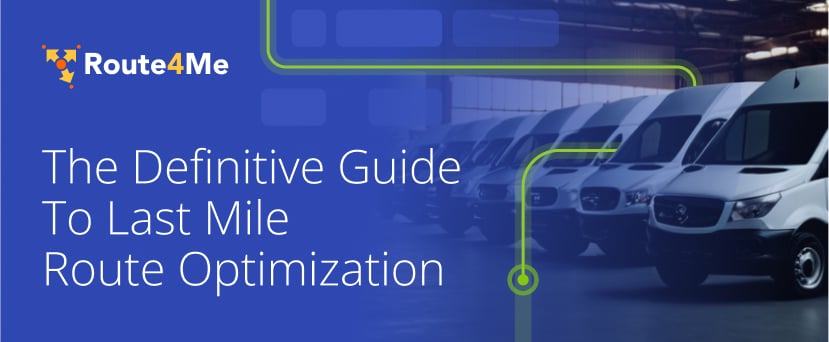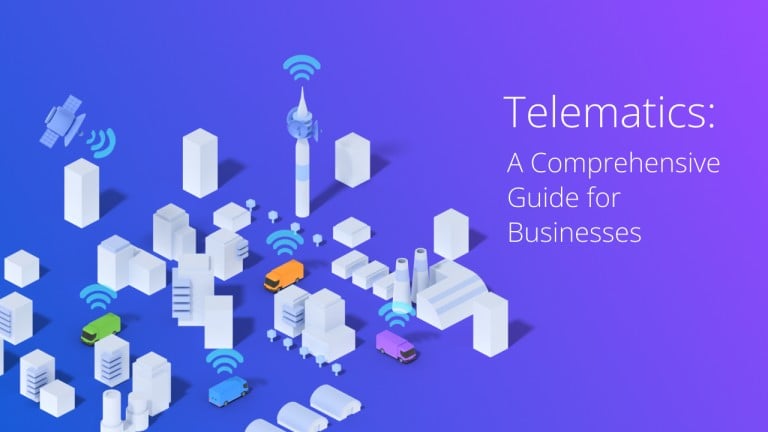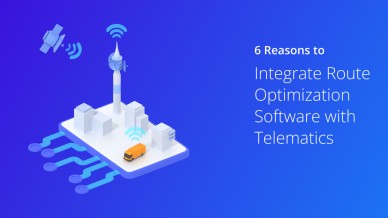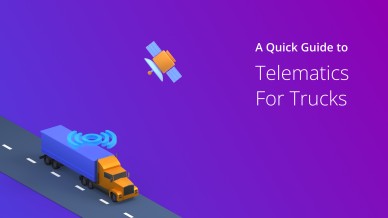These days, staying one step ahead is key to thriving. This is especially true in industries like transportation, logistics, and field services, where efficiency, safety, and cost management are paramount. Enter telematics – a powerful technology that is transforming the way businesses operate and manage their mobile assets. This comprehensive guide will explore the intricacies of telematics, its wide-ranging benefits, and how it can empower your business to thrive in the digital age.
Table of Contents
Understanding the Basics of Telematics
Telematics combines telecommunications, informatics, and wireless tech to transmit, receive, and store vehicle data. Using GPS devices and onboard sensors in vehicles, telematics gathers essential info on location, speed, engine performance, driver behavior, and overall vehicle health.
How Telematics Works
At its core, telematics involves a seamless flow of data:
- Data Collection: Telematics devices, often referred to as “black boxes,” continuously gather data from various vehicle sensors.
- Data Transmission: This data is transmitted wirelessly to a central server using cellular networks or satellite communication.
- Data Processing and Analysis: Sophisticated software processes the raw data, converting it into user-friendly formats accessible through web portals and mobile applications.
Types of Data Collected
Telematics systems capture a wealth of information, including:
- Location: Real-time GPS tracking provides precise vehicle location, enabling efficient route optimization and dispatching.
- Speed: Monitoring vehicle speed helps ensure compliance with speed limits and promotes safe driving practices.
- Engine Performance: Data on engine idling, fuel consumption, and temperature can be used to identify inefficiencies and optimize fuel usage.
- Driver Behavior: Telematics can track metrics like harsh braking, acceleration, and cornering, providing insights for driver coaching and safety programs.
- Vehicle Health: Diagnostic information alerts fleet managers to potential maintenance issues, allowing for proactive repairs and minimizing downtime.
Want To See How Route4Me Can Improve Your Telematics Game?

Key Benefits of Telematics for Businesses
The data insights provided by telematics translate into tangible benefits for businesses across various industries.
- Increased Operational Efficiency: Real-time data empowers businesses to optimize routes, reduce idling time, and improve resource allocation, leading to significant gains in efficiency. For instance, a delivery company can use real-time data to provide customers with accurate arrival times, enhancing customer satisfaction and streamlining operations.
- Enhanced Safety: By monitoring driver behavior and identifying risky driving habits, telematics enables the development of targeted driver coaching programs. The evolution of AI in telematics is crucial here. Instead of simply detecting objects and behaviors, modern systems can analyze the “actions” behind those behaviors. For example, understanding why a harsh braking incident occurred – whether due to following too closely or an external factor like a car cutting off the driver – allows for more effective coaching.
- Improved Compliance: Telematics simplifies compliance with regulations related to hours of service, vehicle inspections, and other industry-specific requirements. By automating data logging and reporting, businesses can minimize administrative burdens and reduce the risk of non-compliance penalties.
- Reduced Costs: Telematics delivers measurable cost savings through improved fuel efficiency, optimized maintenance schedules, and potentially lower insurance premiums. By identifying and addressing fuel-wasting behaviors like excessive idling, businesses can significantly reduce fuel consumption. Proactive maintenance based on vehicle health data minimizes costly breakdowns and extends vehicle lifespan. Insurance companies may offer lower premiums to businesses that demonstrate safe driving practices through telematics data.
The Human Element: Drivers and Telematics
While telematics offers numerous advantages, it’s essential to address the human element – the drivers. Transparency and open communication are key to fostering trust and ensuring driver buy-in.
- Addressing Driver Concerns: It’s natural for drivers to have concerns about privacy, surveillance, and the potential impact on job security. It’s crucial to proactively address these concerns and emphasize that telematics is not about micromanagement but about enhancing safety and improving mission-critical fleet operations.
- Promoting Transparency and Trust: Clearly communicate how telematics data is used, focusing on the benefits for both the driver and the company. Emphasize that the primary goal is to improve safety, provide constructive feedback, and support driver development.
- Focusing on Driver Coaching and Development: Position telematics as a tool for driver improvement, not punishment. Use data insights to provide personalized coaching, identify areas for improvement, and recognize and reward safe driving practices.

Telematics Beyond Trucking: Exploring Diverse Applications
While telematics has traditionally been associated with the trucking and transportation industries, its applications extend far beyond.
- Public Transportation: Telematics optimizes routes, improves passenger safety, and enhances the overall efficiency of public transit systems. Real-time tracking allows for better scheduling and dispatching, while onboard sensors can monitor passenger load and safety conditions.
- Construction: In the construction industry, telematics helps track equipment usage, optimize resource allocation, and improve site safety. Data on equipment location and operating hours allows for better planning and minimizes downtime. Sensors can monitor equipment health, alerting managers to potential maintenance issues before they cause costly delays.
- Agriculture: Telematics plays a crucial role in precision farming, enabling farmers to track livestock, optimize irrigation, and manage resources more effectively. Sensors can monitor soil conditions, weather patterns, and crop health, helping farmers make data-driven decisions to maximize yields.
- Delivery and Logistics: Telematics enhances delivery efficiency, enabling real-time package tracking and improving customer service. Businesses can provide customers with accurate delivery windows and proactively address potential delays, enhancing transparency and customer satisfaction.
Data Security and Privacy Considerations
As with any technology that handles sensitive data, security and privacy are paramount in telematics.
- Ensuring Data Protection: Reputable telematics providers prioritize data security, employing measures like encryption, secure storage, and strict access controls to safeguard sensitive information. When choosing a telematics solution, it’s crucial to inquire about their data security practices and ensure they align with industry best practices.
- Addressing Legal and Ethical Implications: Telematics data usage must comply with relevant data privacy regulations, such as GDPR. Transparency with drivers about data collection and usage practices is essential, along with obtaining informed consent where necessary.
- Building Trust with Stakeholders: Open communication and clear policies regarding data security and privacy are crucial for building trust with drivers, customers, and other stakeholders. Businesses should be transparent about how data is collected, used, and protected to foster a culture of trust and responsible data management.
The Future of Telematics: Emerging Trends and Innovations
The telematics landscape is constantly evolving, driven by advancements in AI, machine learning, and other cutting-edge technologies.
- Advanced AI and Machine Learning: The future of telematics lies in the development of even more sophisticated algorithms capable of analyzing driver behavior, predicting risks, and providing personalized coaching. AI-powered systems will go beyond basic rule-based alerts, offering nuanced insights and recommendations tailored to individual drivers and specific driving situations.
- Integration with Other Technologies: Telematics will increasingly integrate with other emerging technologies, such as autonomous driving systems, blockchain, and the Internet of Things (IoT). This convergence will create a connected ecosystem, enabling seamless data sharing and unlocking new possibilities for efficiency, safety, and automation.
- Predictive Maintenance and Vehicle Health: Telematics will play a pivotal role in predictive maintenance, using sensor data and AI to predict potential vehicle issues before they occur. This proactive approach will minimize downtime, optimize maintenance schedules, and reduce overall maintenance costs.
- Smart and Sustainable Transportation: Telematics will contribute to the development of smarter and more sustainable transportation systems. By optimizing routes, reducing fuel consumption, and promoting safer driving practices, telematics will help reduce traffic congestion, lower emissions, and create more environmentally friendly transportation networks.
Choosing the Right Telematics Solution
With a wide array of telematics solutions available, it’s crucial to select a system that aligns with your business needs and goals.
- Factors to Consider: When choosing a telematics provider, consider factors such as the size of your fleet, the types of vehicles you operate, your specific business goals (e.g., safety, efficiency, compliance), and your budget.
- Key Features to Look for: Essential features to look for include real-time tracking, driver behavior monitoring, customizable reporting capabilities, and seamless integration with other business systems you use, such as dispatching software or maintenance management platforms.
- Scalability and Flexibility: Choose a solution that can scale with your business and adapt to future growth and changing needs. A flexible platform that can accommodate different types of vehicles and integrate with new technologies as they emerge will ensure your telematics investment remains valuable in the long run.
Integrating Telematics Solutions with Route Optimization Software
Integrating telematics with data-driven route optimization software combines real-time data with smart routing, creating a powerful tool for enhanced efficiency and cost management. Here’s how telematics and enterprise-grade route optimization work together to benefit your business:
- Dynamic Route Adjustments: Real-time GPS tracking from telematics allows for immediate route changes, optimizing for traffic or unexpected obstacles.
- Enhanced Driver Performance: Insights into driver behavior (like harsh braking or idling) inform customized route plans that reduce fuel consumption and promote safer driving.
- Proactive Maintenance Scheduling: Vehicle health data from telematics helps schedule maintenance before issues arise, minimizing disruptions to optimized routes.
- Improved Customer Service: Real-time tracking enhances delivery time accuracy, supporting clear communication with customers and efficient dispatching.
Integrating these tools, including mobile routing apps maximizes operational efficiency, keeping fleets on the road and on schedule.
Telematics Integration Use Case
Matthews International, a leader in memorial products like caskets and urns, leverages Route4Me’s telematics to streamline last-mile delivery. This integration ensures funeral directors and families receive timely, sensitive service.
Reliable, time-sensitive deliveries are essential in this industry. The company faces unique logistical challenges, including high fuel costs, complex routes, and the need for precision to avoid missed deliveries across both urban and rural areas.
With Route4Me’s route planning and telematics tools, Matthews has reduced planning time from hours to minutes and cut mileage by 7%. This automation lowers fuel expenses, enhances delivery reliability, and helps them consistently meet customer expectations.

Frequently Asked Questions (FAQs) about Telematics for Businesses
How does patented technology support telematics in routing and dispatch systems?
How can telematics benefit my business?
How does telematics improve driver safety?
How does integrating telematics with commercial-grade route optimization software benefit my business?
What types of data does a telematics system collect?
What industries can benefit from using telematics?
Are there any data security and privacy concerns with telematics?
What does the future of telematics look like?
Final Thoughts
Telematics is a game-changing technology that helps businesses boost efficiency, safety, and profitability. By tapping into data and AI, telematics delivers insights that lead to smarter decisions, streamlined operations, and better performance for mobile assets. As it keeps evolving and merging with new tech, its ability to transform industries will only get stronger. Adopting telematics now means investing in a smarter, safer, and more sustainable future for your business.



